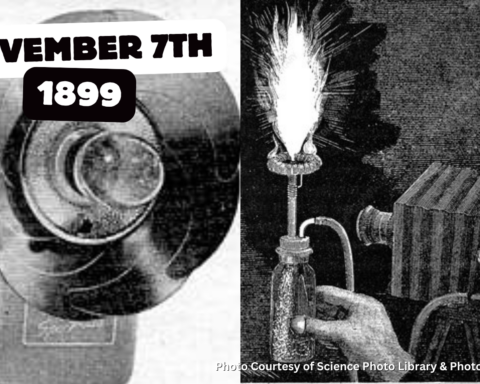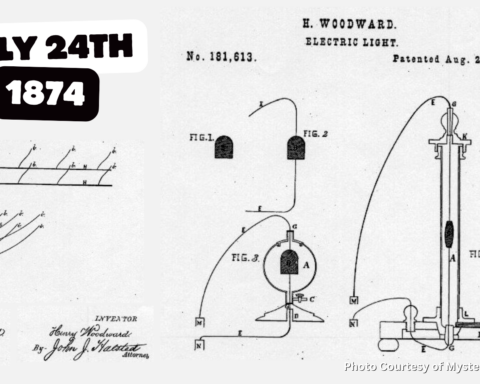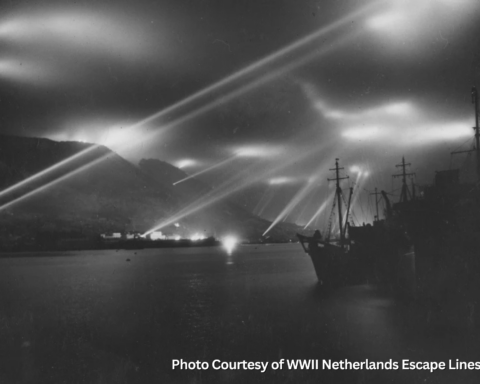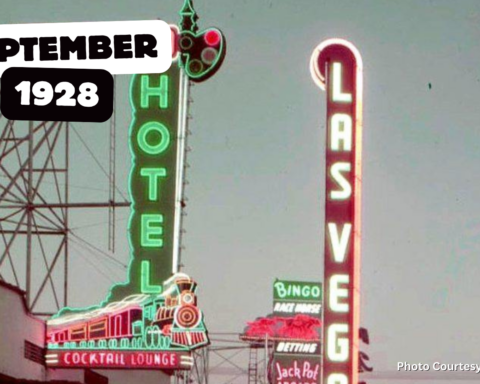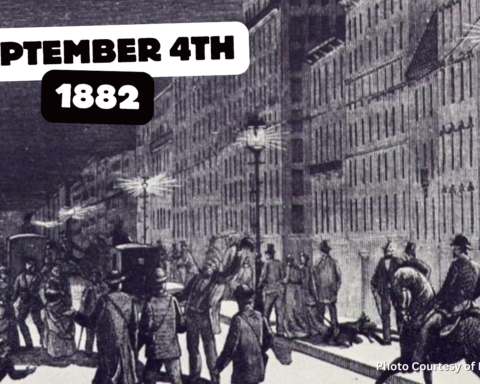When most people think of Times Square in New York City, they think about its bustling crowds, dazzling lights, towering billboards, and iconic signs. Among the many captivating attractions of the past, “the Zipper”, or as it was originally known as “the Motograph News Zipper”, holds a special place in the hearts of visitors and locals alike. In this blog, we will delve into the intriguing history of the Motograph News Zipper, exploring its origins, significance, and enduring legacy in the vibrant heart of Times Square.
The Motograph News Zipper made its debut in 1928, designed by the innovative engineers and inventors Frank C. Reilly and Francis EJ Wilde, who patented the device five years earlier in 1923. Inspired by the rapid advancements in technology and the growing popularity of moving pictures, the two inventors sought to create a dynamic sign that would capture the attention of people passing by.

The result was a huge display of scrolling news headlines that wrapped around a cylindrical structure that resembled a giant zipper.
The display wrapped around the third and fourth floors of the New York Times building at their 1 Times Square address. It was made up of 14,800 incandescent bulbs distributed in a rectangular frame 377 feet long and 5 feet tall. Each of the letters displayed consisted of a matrix 12 bulbs vertically and 7 bulbs horizontally. All the bulbs were connected by vast amount of wiring to the device which allowed the letters to be displayed and seen from a distance of several city blocks.
In order to compose a headline, an operator would place thin metal plates (19 cm by 7.6 cm) with the letters making up the headlines in relief onto a frame. The frame would move along a conveyor belt to a field of brushes each connected to individual lightbulbs. This would cause the lightbulbs to flash in a manner making up the individual letters, thus displaying the headline.
The Zipper cost the New York Times an amazing $80,000, or $1.5 million by today’s standards. It took 8 weeks to build and was worked on 24 hours per day to meet the deadline.
The first headline displayed was the announcement of Herbert Hoover’s victory over Al Smith on November 6, 1928. The display read “HOOVER DEFEATS AL SMITH”.
On May 18, 1942, it was extinguished for the first time in history in order to comply with the black-out orders given by the military.

On the morning of August 14, 1945 at 7:30am (EST), the following message was displayed on the Motograph: ***OFFICIAL – TRUMAN ANNOUNCES JAPANESE SURRENDER***.
James Torpey, the person responsible for composing the headlines and general operation, had spent nearly a full day in order to make sure the headline was correct. He came up with the idea of adding 3 stars to the beginning and end of the headline which represented the 3 branches of the American armed forces. Almost 750,000 people crowded around the building to read the headline, the largest audience the Motograph would ever see.
The Motograph News Zipper quickly became an iconic fixture in Times Square, captivating the imagination of both locals and tourists. Its constant stream of news and advertisements made it a reliable source of information and entertainment. The sign became a symbol of the bustling energy and vibrant spirit of Times Square, attracting attention from filmmakers, photographers, and artists who sought to capture its essence. It became a backdrop for countless movies, TV shows, and photographs, solidifying its place in pop culture.
The Motograph operated continuously until 1961 when The New York Times moved out of the building. The tower was subsequently purchased by Allied Chemical in 1963. It was put back into service in 1965 but would only operate sporadically with some gaps lasting several years.
In 1975, the Motograph Zipper was extinguished and sat dark for 5 years. Newsday rented the display in 1980, putting it back into service once more. However, in December 1994, Newsday announced the lease would terminate at the end of the month.
Although the original Motograph News Zipper is no longer in operation, its legacy lives on in the vibrant spirit of Times Square. The sign paved the way for the dynamic and ever-changing digital billboards that now dominate the area. Its influence is evident in the countless LED screens that adorn the buildings, displaying a constant stream of news, advertisements, and captivating visuals. The Motograph News Zipper laid the foundation for the technological marvels that continue to captivate visitors in Times Square today, and it reminds Times Square visitors that today’s headlines are only a zipper away!
Featured Image Courtesy of Stuart Sevastos.

